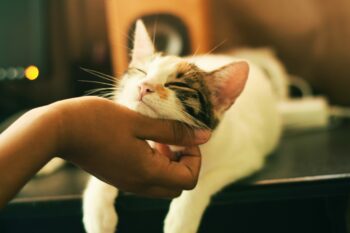The Humane Society of the United States supports indoor-only living for cats, but some owners remain convinced that life in the “great” outdoors can be beneficial. A new study on the secret lives of feral and free-roaming house cats solves the mystery. One message is clear: Living outdoors poses countless threats to cats. Here, learn why the life expectancy for outdoor cats is shortened by about 10 years versus that of indoor-only house cats.
Roaming Over Widespread Territories
Richard Warner, an emeritus professor of natural resources and environmental sciences at the University of Illinois at Urbana-Champaign, and his colleagues conducted the study, which was recently published in the Journal of Wildlife Management. Using radio transmitters and other high-tech equipment, the researchers tracked every move of 42 owned and unowned cats living at the southern edge of Champaign and Urbana, neighboring cities in Central Illinois.
As anticipated, feral cats had larger territories than the pet cats and were more active throughout the year. Even the researchers, however, were surprised by one mixed breed male, which had a home range of 1,351 acres, the largest tract of all cats tracked.
“That particular male cat was not getting food from humans, to my knowledge, but somehow it survived out there amidst coyotes and foxes,” says co-author Jeff Horn. “It crossed every street in the area where it was trapped. [It navigated] stoplights and parking lots.”
The average home range for pet cats was 4.9 acres, but as Horn says, “That’s a lot of backyards.” They ran, stalked prey, slept, rested and often encountered feral cats looking to establish dominance over an area. For example, each morning during the study, one feral cat waited for a particular pet feline to emerge in its garden. The feral animal would then attempt to chase away the house cat.
Encounters such as these can lead to cats developing anxiety over their territory. Outdoor cats who are concerned about protecting their backyard from intruders may display obsessive behaviors such as spraying, patrolling, and refusing to leave the garden. Once outdoor cats develop these behaviors, it can require specific methods such as crate training, CBD oil supplementation, and even anti-anxiety medication to help restore cats’ wellbeing.
Dangerous Encounters
All outdoor cats can encounter various wildlife, in addition to the viruses and illnesses harbored by both feral cats and other species.
“For example, Toxoplasma gondii, a parasite spread primarily by cats, may cause neurological, reproductive and even respiratory problems in humans, cats and wildlife, depending on the species affected,” says co-author Nohra Mateus-Pinilla of the Illinois Natural History Survey. “Rabies, cat scratch fever, feline leukemia and feline immunodeficiency virus are also of concern to pet owners whose cats encounter other cats outdoors. Vaccination of pet cats will reduce but not eliminate the threat of disease transmission.”
Warner agrees. “Two of the leading causes of cat deaths in that study were other cats and disease, and both of these leading causes of death are sitting here waiting for these owned cats outdoors.” This concern about disease doesn’t even take into account other threats, such as ingesting poisons, getting hit by a car, running into neighbors who hate cats and more.
The Solution
Adam Goldfarb, director of the Pets at Risk Program at the Humane Society of the United States, admits that in a perfect world, cats would be able enjoy the exercise, fresh air, sights, smells and sounds of the outdoors. The answers then are to help provide your cat with related experiences inside, or to fully control your pet’s time outdoors. Goldfarb suggests following these four steps:
- If possible, train your cat to tolerate a leash. Your cat would still be exposed to germs, but at least many of the other dangers would be eliminated. Up-to-date vaccinations are critical.
- Set up an indoor-outdoor enclosure where your pet is protected, such as by screens. Make sure proper shade and water are provided. Supervise your cat.
- Cats love to climb, so establish vertical space for them in your home. You can get creative with cat trees, secure dedicated shelving or other cat-friendly items.
- Most importantly, spend daily time interacting with your cats, whether that involves playing, training or just sitting on the couch with them.
Goldfarb urges owners not to buy into the stereotype that cats are somehow loners. They love receiving attention and hanging out with their owners. Just like a satisfied human mate, a healthy and content cat will easily let go of its roaming ways in exchange for a better, safer life indoors with you.







